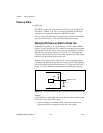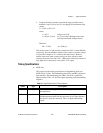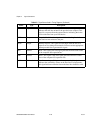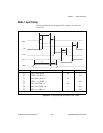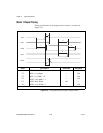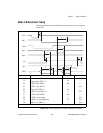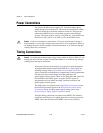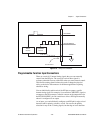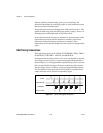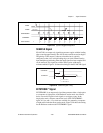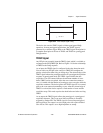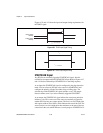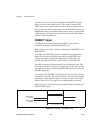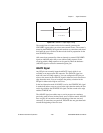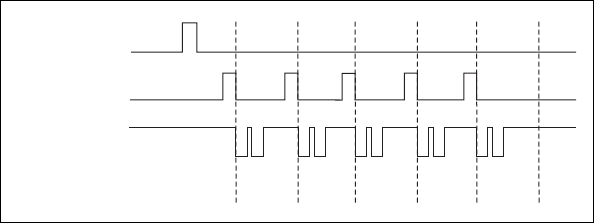
Chapter 4 Signal Connections
6023E/6024E/6025E User Manual 4-32 ni.com
depends upon the particular timing signal you are controlling. The
detection requirements for each timing signal are listed within the section
that discusses that individual signal.
In edge-detection mode, the minimum pulse width required is 10 ns. This
applies for both rising-edge and falling-edge polarity settings. There is no
maximum pulse-width requirement in edge-detect mode.
In level-detection mode, there are no minimum or maximum pulse-width
requirements imposed by the PFIs themselves, but there can be limits
imposed by the particular timing signal that is controlled. These
requirements are listed in this chapter under the section for each applicable
signal.
DAQ Timing Connections
The DAQ timing signals are SCANCLK, EXTSTROBE*, TRIG1, TRIG2,
STARTSCAN, CONVERT*, AIGATE, and SISOURCE.
Posttriggered data acquisition allows you to view only data that is acquired
after a trigger event is received. A typical posttriggered DAQ sequence is
shownin Figure 4-17. Pretriggered dataacquisition allows youto view data
that is acquired before the trigger of interest in addition to data acquired
after the trigger. Figure 4-18 shows a typical pretriggered DAQ sequence.
The description for each signal shown in these figures is included in this
chapter under the section for each corresponding signal.
Figure 4-17. Typical Posttriggered Acquisition
13042
TRIG1
STARTSCAN
CONVERT*
Scan Counter



